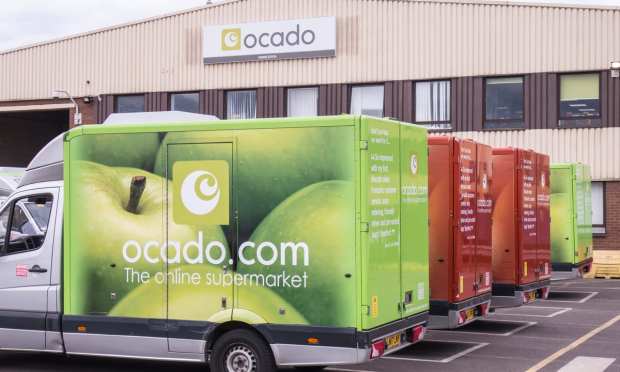Is Ocado’s 40 Percent Revenue Growth The ‘New Normal’ For Grocery Retail?

At the end of 2020, as the then-new, more contagious strain of the coronavirus spread throughout the United Kingdom, the country went into another round of severe lockdowns, and many of these measures remained in place through the beginning of 2021. In this time, sales for U.K.-based online grocer Ocado, which develops tech solutions for grocery delivery, rose 40 percent year-over-year, according to Yahoo Finance UK. For the quarter ending Feb. 28, sales for Ocado Retail, a retailer created by Ocado Group and by U.K.-based department store Marks & Spencer, totaled 599 million pounds ($829 million), and the average cost of an order, the Guardian reports, was up to 147 pounds from 110 pounds, a 34 percent increase.
“Over the last twelve months, there has been a dramatic and permanent shift towards online grocery shopping around the world,” the company’s Founder and CEO Tim Steiner said in a statement. “Millions of customers have experienced online grocery shopping through the pandemic and many of them will not be going back to bricks and mortar.”
Generalizing from the company’s strong Q1 performance, however, may not be the soundest way of predicting the future of online grocery. PYMNTS data indicate that about 8 in 10 consumers will continue to prefer to buy alcohol and fresh meat, produce, and dairy in-store after the pandemic, 7 in 10 will continue to prefer to buy packaged goods and pharmaceuticals in-store, and 6 in 10 will even prefer to buy non-food items in-store. Granted, these data represent the preferences of U.S. consumers, not U.K., and they still leave plenty of room for the online grocery sector to grow. Still, to assume that “many [consumers] will not be going back to bricks and mortar” may be premature, at least at this point.
Steiner continued, “As we progress towards a new normal for grocery retail, and the focus for the industry shifts from meeting unprecedented demand to winning in a large and growing online channel, the need for a fulfilment solution that both delights a more knowledgeable customer, and enables profitable, sustainable growth, has never been more critical.”
Different online grocers are approaching this problem — how to profitably deliver online grocery orders in a way that is satisfying to the consumer — in different ways. Some are turning toward sidewalk robots, others toward self-driving trucks, and others toward building out their order fulfillment infrastructure with micro-fulfillment centers (MFCs).
“Over the past year, large numbers of UK consumers have made a permanent shift to online grocery shopping,” Ocado Retail CEO Melanie Smith added in the statement. “Ocado Retail is best placed to serve these customers as we continue to improve the customer experience through the joint venture with M&S, adding new products, offering greater value, and maintaining high customer service levels.”
This focus on inventory size and price point makes sense for a large retailer like Ocado Retail. However, the online grocer is not only competing to seize on consumers’ changing habits with other grocers looking to provide range and value. It is also competing with smaller, more boutique delivery services, which emphasize curation more than size of selection, offering a local mindset and a personal feel that is more difficult for larger retailers to achieve. It is unlikely that online grocery will be the “new normal” that Ocado Retail predicts in coming years, as consumers continue to opt for the sense of discovery provided by on-site shopping, but habits are certainly changing, and online grocers like Ocado that saw great success during the pandemic are well positioned to build out their user base even more in years to come.
